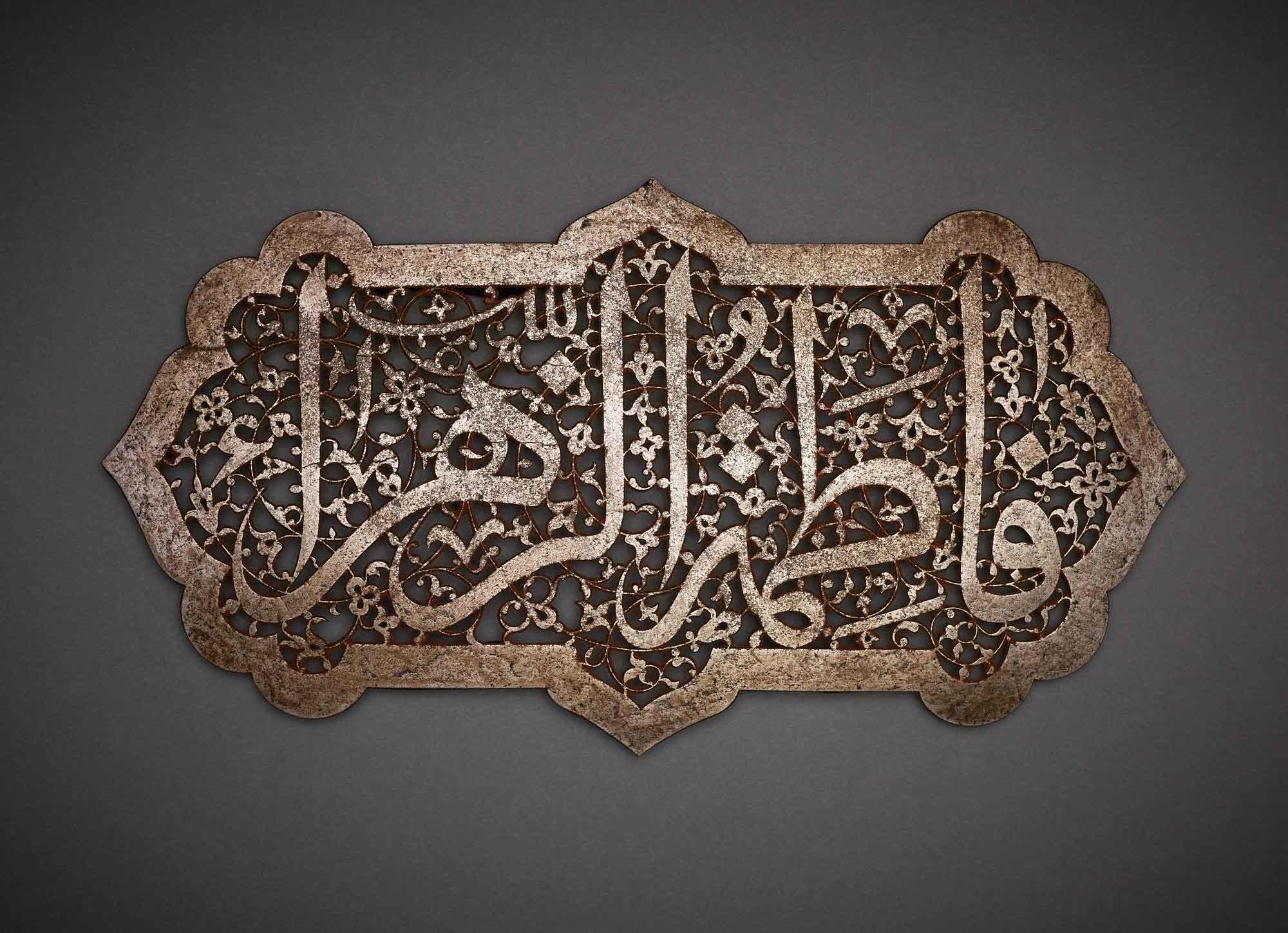Click on the image to zoom
Plaque
- Accession Number:AKM616
- Place:Iran
- Dimensions:22.7 x 12 x 1 cm
- Date:late 17th century
- Materials and Technique:Pierced steel
Openwork steel screens and doors are mentioned in the historical annals as special gifts that were given by rulers and powerful individuals to shrines, especially those of the twelve Shia imams and their descendants. Steel was first extensively used as an architectural decorative element in the tomb of the Ilkhanid ruler Oljeitu, built between 1307 and 1314 in Sultaniyya, Iran, and prior to that mostly employed in arms and armour. From that time onward, elaborate screens, doors, and grilles were added to shrines. This steel plaque, for example, would have been part of the openwork components of a shrine door or decorative frieze with the names of the Shia imams. The inscription Fatima al-Zahra’ (“Fatima the Radiant”), the name of the Prophet’s daughter and her epithet, is carved out in an elegant contrast between the solid lines of the magisterial thuluth script and the intricately carved floral spiral that forms its background.
Note: This online resource is reviewed and updated on an ongoing basis. We are committed to improving this information and will revise and update knowledge about this object as it becomes available.


